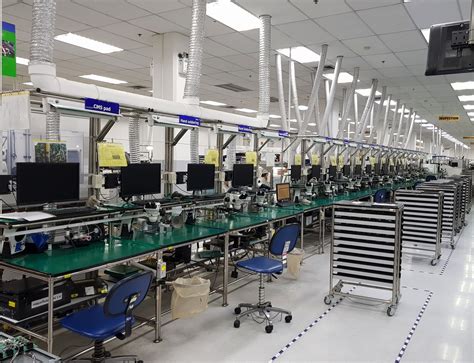Streamlining Your Subcontract PCB Assembly Process for Success
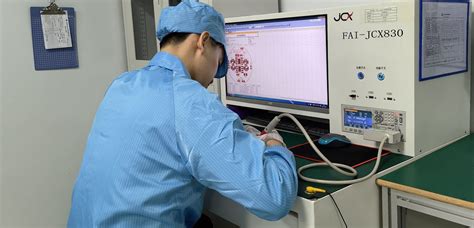
Key Takeaways
Navigating the world of subcontract PCB assembly—often referred to as PCBA—requires a solid grasp of pivotal concepts and practices. It’s essential to recognize that the success of your PCB assembly projects hinges on selecting the right partners, which can significantly influence both the efficiency and quality of production. A well-defined criterion for evaluating potential partners will enhance your collaboration—look for companies with demonstrated expertise, robust quality assurance measures, and a proven track record in meeting project timelines. Effective management of project timelines is not only about strict adherence to schedules but also involves proactive communication and regular check-ins with your partners to address any issues as they arise. In this rapidly evolving industry, focusing on optimizing production processes is vital; employing lean manufacturing principles can significantly streamline workflows and reduce waste, which ultimately leads to improved productivity and outcomes. Incorporating strong quality assurance practices throughout each phase of the PCBA process will help mitigate risks associated with defects. Remember, “A stitch in time saves nine” when it comes to maintaining standards in PCB assembly—a commitment to quality at every step leads to greater long-term success. Finally, keep an eye on emerging trends within subcontract PCB assembly as market demands shift; being adaptable will position you favorably for future opportunities.

Understanding the Basics of Subcontract PCB Assembly
In today’s competitive landscape, subcontract PCB assembly has become a critical component of successful electronics manufacturing. To effectively manage your PCB assembly projects, it is essential to grasp the fundamental aspects of PCBA. Unlike in-house assembly, subcontracting allows companies to leverage specialized expertise and resources, thus ensuring higher quality and efficiency. Understanding the intricacies of this process involves familiarizing oneself with technical specifications, component sourcing, and production methodologies. PCB assembly entails not just the physical construction but also design considerations that optimize functionality while minimizing costs. By recognizing key elements such as labor costs, lead times, and quality standards, businesses can make informed decisions that enhance their overall production efficacy. As you delve into subcontracting arrangements, keep in mind that effective communication with your partners is vital for aligning expectations and overcoming potential obstacles in workflow integration. Emphasizing collaboration will not only streamline production but will also assist in maintaining strict adherence to quality benchmarks essential for successful outcomes in your PCBA endeavors.
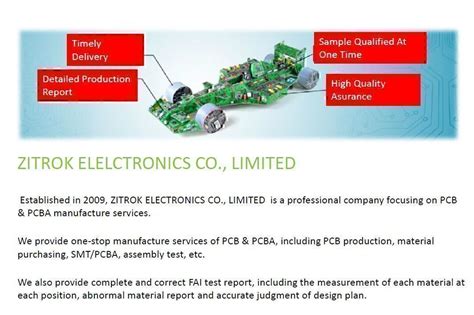
Criteria for Selecting the Right PCB Assembly Partners
Choosing the right PCB assembly partner can significantly impact the success of your projects. It is essential to evaluate potential partners based on several key criteria that ensure efficiency and quality throughout the PCBA process. First and foremost, assess their technical capabilities and expertise in handling your specific requirements. Look for partners with a proven track record in delivering high-quality PCB assemblies that meet industry standards.
Additionally, consider their production capacity and flexibility. This includes evaluating their ability to scale operations up or down based on your project demands, as well as their lead times. A partner who can adapt to changing requirements will contribute to a smoother workflow.
Communication is another critical factor. Effective communication channels can prevent misunderstandings and foster collaboration, ensuring that project updates are transparent and issues are addressed promptly. Consider using a structured approach like the table below to evaluate potential partners:
| Criteria | Importance Level (1-5) | Partner A Rating | Partner B Rating |
|---|---|---|---|
| Technical Expertise | 5 | ||
| Production Capacity | 4 | ||
| Lead Time | 4 | ||
| Communication | 5 | ||
| Quality Control Procedures | 5 |
By employing this systematic approach, you can effectively compare different PCB assembly providers. Engage in discussions about quality assurance processes, certifications, and past client experiences to further ensure that you choose a partner aligned with your project goals. Making informed selections in your PCBA partnerships will elevate both productivity and overall project outcomes, paving the way for success in your assembly efforts.
Key Strategies for Managing Project Timelines Effectively
Effectively managing project timelines is critical in the realm of subcontract PCB assembly (PCBA), as delays can impact overall production and delivery schedules. One of the first steps is to establish clear milestones throughout the PCB assembly process. This allows all stakeholders to maintain a shared understanding of expectations and deadlines. Engaging with your PCB assembly partners early on can facilitate the development of a comprehensive timeline that accounts for potential challenges. Additionally, it is essential to prioritize regular communication, ensuring everyone remains aligned on progress and any changing circumstances that may affect project schedules. Implementing project management tools can also enhance visibility and accountability, making it easier to track key tasks and responsibilities. Furthermore, utilizing lean principles can streamline workflows, allowing for quicker decision-making processes and minimizing downtime. Emphasizing a proactive approach while evaluating each phase of production can significantly reduce bottlenecks, ultimately leading to a more efficient PCB assembly operation that adheres to your planned timeline. By fostering strong relationships with partners and ensuring that all parties are committed to the timeline, you enhance not only productivity but also the overall success of your PCBA projects.
Optimizing Production Processes for Better Efficiency
In the realm of subcontract PCB assembly, optimizing production processes is paramount to achieving both efficiency and quality in PCBA projects. This optimization begins with a thorough evaluation of the workflow involved in the assembly process. By identifying bottlenecks and areas for improvement, manufacturers can implement strategies that enhance productivity. Utilizing advanced technologies such as automation and real-time monitoring can significantly streamline operations, ensuring that resources are utilized effectively. Additionally, fostering a culture of continuous improvement among team members encourages innovation and proactive problem-solving. Regular training sessions can also equip staff with the necessary skills to adapt to new equipment and methodologies swiftly, further enhancing the efficiency of PCB assembly processes. By focusing on these elements, organizations not only reduce lead times but also increase the overall reliability of their PCBA products, ultimately leading to successful project outcomes.
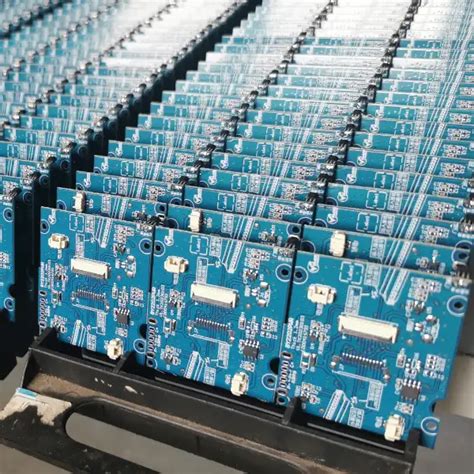
Quality Assurance Practices in Subcontract PCB Assembly
In the realm of subcontract PCB assembly, implementing robust quality assurance practices is essential for ensuring the reliability and performance of the final product. A key strategy involves establishing comprehensive testing protocols to assess the functionality of each PCBA during different stages of production. This can encompass visual inspections, automated optical inspection (AOI), and functional testing, which collectively help identify defects early in the pcb assembly process. Moreover, fostering a culture of continuous improvement among your team and partners encourages proactive engagement in quality standards. It’s also vital to select partners who prioritize quality control, as their processes will directly influence the outcomes of your projects. Ensuring clear documentation throughout the subcontracting process—detailing specifications, tolerances, and testing results—further aids in maintaining quality benchmarks. By integrating these practices into your pcb assembly workflows, you can significantly enhance both efficiency and product reliability, leading to successful project completions that meet customer expectations.
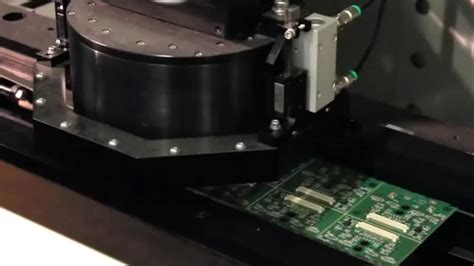
Navigating Communication Challenges with Partners
Effective communication is essential for successful subcontract PCB assembly projects, as it can directly impact both efficiency and quality. When engaging with PCB assembly partners, it’s crucial to establish clear channels of communication right from the start. This includes defining roles and responsibilities within the team and setting expectations regarding project outcomes and deliverables. Utilizing tools such as collaborative platforms can facilitate real-time updates, helping to bridge any gaps that may arise during the PCBA process. Regular check-ins and updates can prevent misunderstandings and ensure that all stakeholders are aligned on project timelines and objectives. Additionally, fostering an environment where feedback is encouraged allows for quick resolution of issues, which is vital when aiming to optimize productivity. Communication should not only be about pushing information but also about actively listening to partner concerns and insights, thus reinforcing a partnership built on trust and mutual respect. As you navigate these challenges, remember that strong communication practices are foundational to achieving successful outcomes in your subcontract PCB assembly endeavors.
Evaluating Success: Metrics and KPIs for PCB Projects
In the competitive landscape of subcontract PCB assembly, evaluating the success of your projects is essential. Utilizing effective metrics and Key Performance Indicators (KPIs) can provide valuable insights into the overall performance of your PCBA processes. Begin by assessing delivery timelines to ensure that projects remain on schedule; late deliveries can signal efficiency issues in either the assembly process or supply chain management. Another critical area to focus on is yield rates, which measure the proportion of successfully manufactured PCB units against those that were rejected due to defects. High yield rates reflect effective quality control measures and manufacturing processes, while low rates may indicate that revisions are needed in assembly practices or partner selection.
Additionally, consider monitoring cost performance metrics such as cost per unit produced; these figures can reveal the financial efficiency of your subcontractors and help in budget forecasting for future projects. Customer satisfaction scores also serve as a vital KPI in assessing outcomes from a client’s perspective; positive feedback often correlates with successful partnerships and quality outputs in PCBA operations.
Finally, periodic reviews of these metrics should be coupled with actionable insights to initiate improvements. By focusing on relevant KPIs, businesses can ensure not only the success of individual projects but also foster long-term relationships with partners engaged in subcontract PCB assembly, ultimately leading to sustained growth and competitiveness in the market.
Future Trends in Subcontract PCB Assembly: What to Watch For
As the landscape of subcontract PCB assembly evolves, several trends are poised to reshape the industry. One significant trend is the increasing adoption of advanced technologies such as automation and artificial intelligence in the PCB assembly process. These innovations promise to enhance efficiency and accuracy, reducing lead times and minimizing errors in production. Companies that integrate smart manufacturing solutions will likely experience a competitive advantage, as they can better meet the demands of a fast-paced market. Additionally, sustainability is becoming crucial in PCB assembly practices. As environmental concerns grow, subcontractors are prioritizing eco-friendly materials and processes to align with global standards and customer expectations. Furthermore, the rise of Industry 4.0 concepts is fostering greater interconnectivity between subcontractors and manufacturers, allowing for real-time monitoring and adjustments throughout the PCBA lifecycle. This transparency not only optimizes productivity but also enhances collaboration among stakeholders, resulting in more effective project outcomes. As we look ahead, keeping an eye on these trends will be vital for businesses aiming to secure their place in the ever-evolving world of subcontract PCB assembly.
Conclusion
In the realm of subcontract PCB assembly, the process can often seem daunting, yet with the right strategies in place, achieving success becomes attainable. The journey begins with a comprehensive understanding of PCB assembly fundamentals, ensuring that all participants are aligned in their objectives. Selecting the optimal partners for PCBA plays a pivotal role; it’s essential to assess not only their technical capabilities but also their commitment to quality and reliability. Additionally, effective management of timelines is crucial—clear communication and diligent tracking can prevent delays from derailing projects. As production processes are optimized for better efficiency, teams should employ best practices that elevate productivity levels while minimizing waste. Quality assurance remains at the forefront of any successful venture in subcontract PCB assembly, reinforcing the importance of thorough inspection and testing procedures. By navigating communication challenges skillfully and establishing clear metrics and KPIs to evaluate project success, organizations can foster a collaborative environment that promotes shared accountability and innovation. Lastly, staying informed about future trends within the industry will empower teams to adapt proactively and maintain a competitive edge in a rapidly evolving market landscape.
FAQs
What is subcontract PCB assembly?
Subcontract PCB assembly, or PCBA, is a process where an external company specializes in assembling printed circuit boards for another business. This allows companies to leverage external expertise for production efficiency.
What should I consider when choosing a PCB assembly partner?
When selecting a partner for pcb assembly, it’s crucial to evaluate their experience, certifications, and quality control measures. Ensure they can meet your specific technical requirements and delivery timelines.
How can I ensure quality in my subcontract PCB assembly projects?
To maintain quality, implement strict quality assurance practices, including regular inspections and compliance with industry standards. Establish clear communication with your partner about quality expectations from the outset.
What metrics should I track to evaluate the success of my PCB projects?
Key metrics include defect rates, on-time delivery rates, and production costs. These indicators help assess the effectiveness of your pcba processes and facilitate improvements where necessary.
What are some common challenges in subcontracting PCB assembly?
Common challenges include poor communication, misalignment of project objectives, and discrepancies in quality expectations. Addressing these factors early can help mitigate risks associated with dealing with subcontractors.
Learn More about PCB Assembly
For more detailed insights on enhancing your pcb assembly process, please click here.



